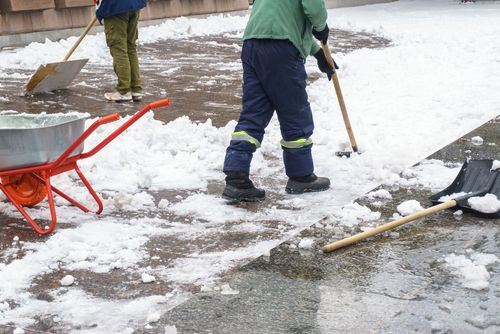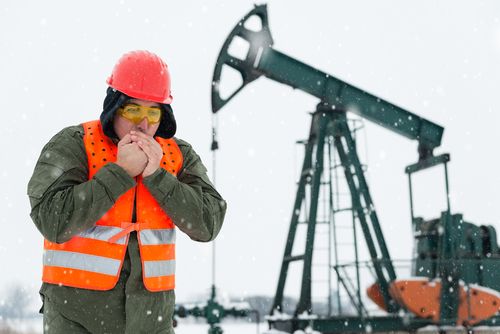
4 Winter Safety Tips for the Workplace
Working outdoors in the winter is among the harshest working conditions to endure. It’s no surprise, either – workers not only have to contend with the hazards that are present in every workplace but with winter conditions and outdoor hazards as well.
Due to the jarring conditions of winter outdoor workplaces, workers and employers should be intimately familiar with injury-preventing winter safety tips and common knowledge about working safely in the winter.
We’ll be covering the four most important winter workplace safety tips to equip you and your team with everything you need to work safely. These tips are simple, easy to complete, and life-saving – make sure to do them before the season starts!
Take Breaks Indoors
Giving your body a break inside during rough outdoor conditions is critical to ensuring that you remain fit, free of numbness, and protected from health hazards like frostbite. 
Those who work outside over long durations without access to warm indoor areas, such as police officers, construction workers, and farmers, should take breaks in cars, trucks, or other vehicles with temperature controls.
Winter conditions are not to be tested and anybody can suffer from cold temperature-related injuries regardless of how accustomed or climatized they are to cold weather.
Make a Winter Safety First-Aid Kit
Outdoor workplaces may not always have immediate access to first-aid equipment or health services, so it’s important to do your diligence and ensure you are equipped with a mobile first-aid kit.
Make sure the first-aid kit isn’t too bulky or cumbersome – it should have convenient proportions that make it easy to carry around. It should, however, have enough to stabilize an employee until emergency services arrive.
Some of the things that should be in your first-aid kit include:
- Heat packs
- Adhesive tape, gauze, and dressings
- Bandages of various sizes
- Tweezers and scissors
- Antiseptic wipes
- Foldable blanket
- First aid manual
- Water
Wear Appropriate Clothing, Outerwear, and Footwear
When workers are required to work outdoors for extended periods of time, such as in the aforementioned careers and others, they should wear clothing, outerwear, and footwear that is appropriate for the conditions.
Make sure to wear multiple layers of clothing; a simple tee shirt and jacket won’t do. An undershirt, sweater, and heavy jacket should be the standard for any outdoor worker. Similarly, thin accessories will not be sufficient. Make sure your socks, gloves, hats, and other winter safety gear is thick wool or material of equivalent strength and protection.
Be Mindful of Ice
Ice is among the most dangerous winter safety hazards and is the leading cause of slips, trips, and falls. At the minimum, be mindful of where you are stepping, and do not walk if you believe the area ahead is covered in ice. Carry a flashlight if you are working during the night to illuminate any areas that appear suspicious.
Make sure to scatter salt/ice melt over your winter outdoor workplace. As many of you already know, salt is great at breaking down the ice and creating a safe space to walk. Failing to spread salt over the ice will only allow the ice to accumulate and cause even worse winter workplace safety hazards.
Winter Workplace Safety Training in Ottawa
Is your workplace ready for the winter season? Preparing outdoor workplaces for Ottawa’s harshest season is a quick, easy, and life-saving task. Failing to prepare can cost lives, money, and months or even years of rehabilitation. Don’t risk anything – make sure you are prepared!
Advanced CT has over 20 years of experience training workplaces with the latest advancements in health and safety. We offer online and in-person classes to accommodate any worker and workplace. Contact us today to begin your winter workplace safety training!



